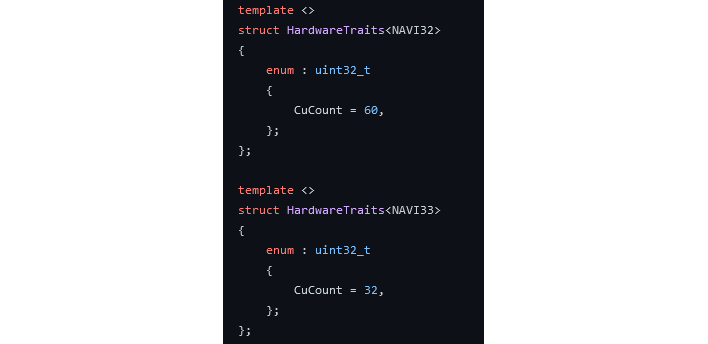AMD Seemingly Leaks Navi 33 And 32 Core Counts For Upcoming Radeon RX 7000 GPUs
This latest information isn't a rumor, but instead a leak straight from AMD itself. As part of an update to the company's ROCm software platform, AMD published some interesting specifications buried in a file titled "performance.hpp." The file has since been taken down, but regular leaker Kepler (@Kepler_L2) snagged a screenshot of the salient part:

If that seems comically straightforward, that's because it is: Navi 32 features 60 CUs (comprising 30 WGPs), and Navi 33 features 32 CUs (16 WGPs). The Navi 33 specification matches up with earlier leaks, but the Navi 32 number is a bit less than the rumored 64 CUs. That puts the peak core count of Navi 32-based graphics cards at 3840 shaders, while Navi 33 tops out at the expected 2048.
As we explained in our RDNA 3 technical overview, the relatively-low shader counts are misleading, because RDNA 3 has twice the functional units per WGP compared to RDNA 2. That means that Navi 32 is probably a GPU with as much as double the Radeon RX 6950 XT's compute power, depending on clock rates. Of course, compute doesn't translate to gaming performance, necessarily. AMD rates Navi 31's compute throughput at ~61 TFLOPS FP32 in the RX 7900 XTX which is nearly triple the RX 6950 XT's ~24 TFLOPS, but only nets about 1.5-1.7x the gaming performance at 4K.
Meanwhile, the little Navi 33 GPU looks similar to the Radeon RX 6650 XT on paper. In practice the performance will probably be closer to the Radeon RX 6800. That card is capable of solid 4K60 performance in many games, but we suspect that Navi 33 will have a harder time scaling to high resolutions owing to its puny cache and overall narrower design.


